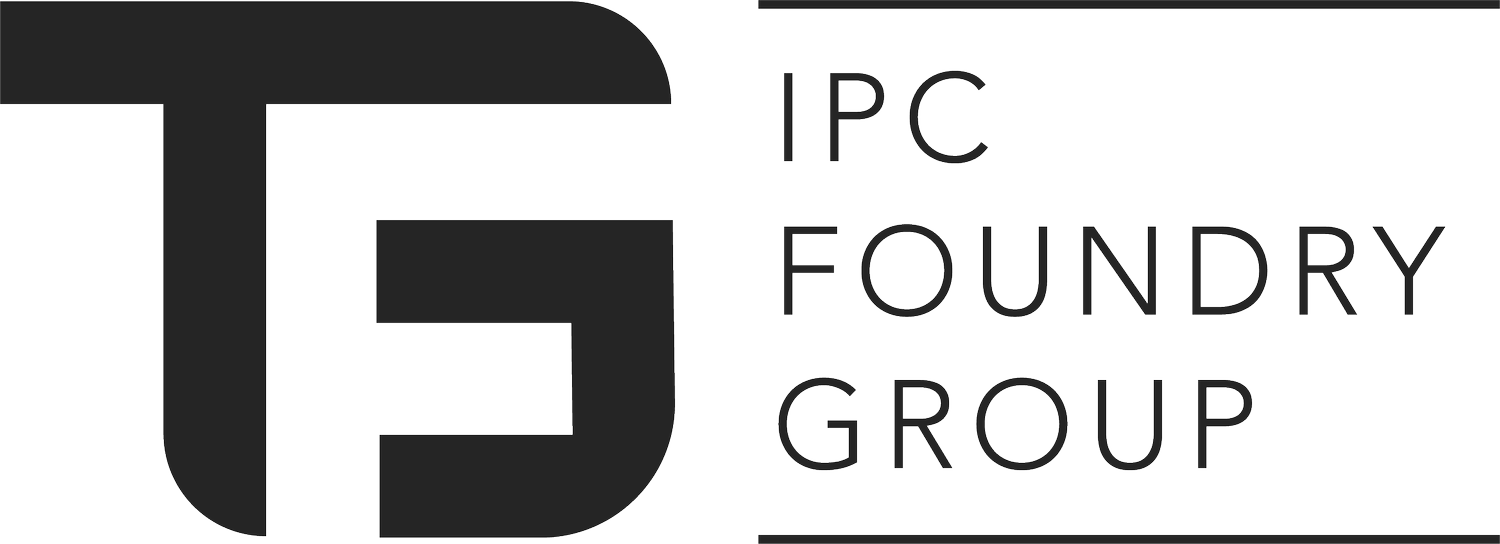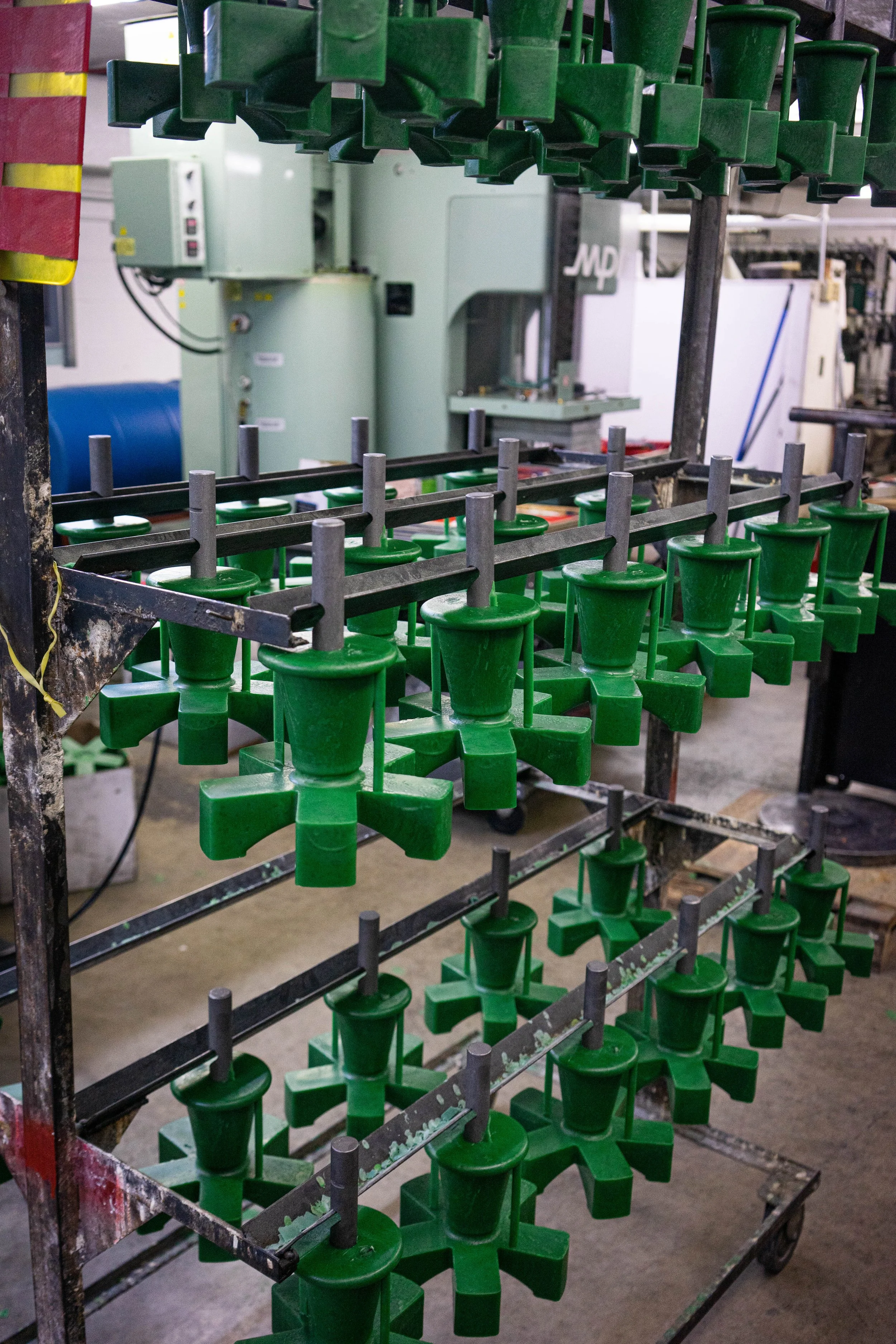How Precision Casting Foundries Use 3D Printing
3D Printing Opens up many time and cost saving opportunities for foundries.
I'm just going to say it - 3D printing is rad. Since buying my personal printer in 2023, I've made tools, designed a super-lightweight tent stake for backpacking, printed parts for my car, geeked out on miniatures, and much more. Since ~2010, 3D printing technology has become much more accessible, and many people now have printers in their homes. Along with this accessibility, the technology has improved, leading to even more widespread applications (perhaps you've even seen videos of homes and warehouses built with 3D printing technology).
Our industry (investment casting) has significantly benefited from advancements in 3D printing technology, and many modern foundries use it to help businesses produce metal parts faster and more affordably than ever before.
In today's blog, we'll look at how Precision Casting Foundries use 3D printing and how it can help you save time and money on your next production cycle.
Let's get into it!
Rapid Prototyping
Modern precision casting foundries utilize 3D prints to assist in prototyping and product development. With a 3D model or sketch in hand, an engineer can quickly produce prototypes in different shapes, textures, colors, materials, weights, and sizes.
For example, a home goods company could be producing a floating bookshelf. With 3D printing, they can experiment with different colors, materials, thicknesses, and sizing options to get the exact minimalist design and strength combination they are looking for. Instead of relying on artist sketches alone, a foundry could print and cast 1:1 prototypes for internal testing and decision-making. If a design needs subsequent updates, engineers at the foundry can change the model and prepare a fresh batch of prototypes. Once a model is finalized, they can ramp up for full-scale production.
3D printing technology has advanced such that complex models can go from CAD to casting in a few hours or days, allowing for much more robust prototyping and product testing possibilities for new product launches. Prototyping also opens the door for BETA testing products with soft launches before a full-scale release. If you're still in the product development stage, an investment casting foundry with 3D printing services may be the solution for your business.
Avoid or Sidestep Costly Tooling
Typically, investment casting employs "tooling" to help create wax patterns. Preparing tooling is time and cost-intensive, often requiring weeks or months to finalize and significant labor costs. With 3D printing, a foundry can sidestep tooling and continue the casting process without it. This enables production to begin significantly faster, reducing turnaround times and costs while on your way to market.
*Note, that for sufficiently large volumes of parts, tooling may still be the most cost-effective solution for long-term production. However, 3D printing can still offer value in additive manufacturing, delivering small batches of parts quickly, prototyping, and more.*Perfect for Small Batch, One-Offs, and Legacy Parts
Traditional tooling can make small-batch or one-off production extremely expensive. By integrating 3D printing, foundries can bypass these upfront tooling costs entirely, enabling cost-effective production of single parts, limited runs, or legacy part reproductions without compromising quality. This flexibility makes investment casting accessible for low-volume applications while also accelerating lead times, allowing manufacturers to respond quickly to customer needs.
For example, a custom auto shop could reach out to a foundry to produce a long-since-retired automotive component for a classic car. The part could be reproduced using reverse engineering and CAD software. With a model in place, foundry workers could print and cast the needed part in a few days and ship it to the auto shop for installation. No need for scowering ebay or exorbitant OEM legacy part costs; just a quality casting produced quickly and a happy customer.
Demo Runs/Proof of Concept
3D printing also enables companies to do a trial run of investment castings without fully committing the time and costs associated with tooling. Get a proof of concept, test a new market, or gather important customer feedback before a large-scale production run.
Get Parts Faster Than Ever
As noted above, 3D printing allows foundries to bypass tooling. In practice this often means having finished parts in hand before traditional tooling would even be completed.
Here is an example timeline:
Traditional Investment Casting Timeline (With Tooling)
Tooling Design (2-8 weeks): CAD adjustments for moldability, draft angles, etc.
Wax Pattern Injection (1–2 weeks): Wax patterns are made via injection molding.
Wax Assembly (if needed) (3–7 days): Hand assembly for complex geometries.
Shell Building (1 week): Dipping, stuccoing, drying cycles.
Dewax & Burnout (1–2 days): Steam autoclave or furnace.
Casting & Finishing (1–2 weeks): Pouring, cooling, cutoff, machining.
Total Time: ~8-12+ Weeks
3D Printing Replacing Tooling (Minor CAD Tweaks):
3D Print Patterns: (1–3 days): Printed in batches around the clock.
Pattern Cleaning/QC: (1 day): Support removal, inspection.
Shell Building (1 week): Same as the traditional process.
Dewax & Burnout (1–2 days): Unchanged from traditional.
Casting & Finishing (1–2 weeks) Unchanged from traditional.
Total Time: ~2-3 Weeks
If you have a time-critical project, a foundry that utilizes 3D printing can be a game-changer for your project.
3D Printing Can Further Streamline Production
Quality investment casting foundries will always seek for ways to streamline production. By utilizing 3D printing (even alongside traditional tooling) foundries can optimize production.
Here are just a few examples:
Experimenting with different infill patterns: Foundries can test different infill patterns to expedite printing speeds with no reduction in quality or consistency.
Using 3D prints to test/prepare gating and tree systems: Foundry workers can use rapidly produced 3D print patterns to test and develop tree and gating systems to optimize production volumes without sacrificing quality. This can benefit projects that utilize traditional tooling as well.
Test Shell Thickness and Drying Times: Foundries can test drying times, necessary shell thickness, and more with rapidly produced 3D patterns. By optimizing these steps, foundries can cut significant time off of a full-scale production cycle.
Test Multiple Materials Fast: As mentioned in our prototyping section, you can test multiple materials in one expedited production cycle without needing to commit the time and costs of traditional tooling.
Reduce Manual Labor: Bypassing tooling also helps foundries avoid a significant amount of time spent on wax injection and its associated manual labor. This will shorten your timeline and save money on your production cycle.
3D Printing enables foundries to experiment and test trees and gating systems much more quickly than with traditional tooling.
Forward Thinking:
In 1903, the Wright Brothers achieved the first powered sustained flight; just 66 years later, in 1969, humans landed on the moon. I use this as an example to say, it is hard to predict exactly how technology will progress in the future. Without too much speculation, we can confidently say in the near future:
3D printing technology will continue to improve allowing more material options, faster speeds, and more consistent results.
3D printing will evolve to include more recyclable and green manufacturing options.
Quality engineers will find more ways to expedite and improve the casting process.
New filaments/materials will be developed that can further streamline the casting process.
We're excited to see it all!
Conclusion
3D printing is revolutionizing investment casting and prototyping, enabling foundries to produce high-quality metal parts with unprecedented speed and flexibility. By sidestepping traditional tooling this technology opens the door to affordable one-offs, small-batch production runs, and legacy part reproductions. At IPC Foundry Group, we proudly offer cutting-edge 3D printing and prototyping services alongside our more than 45 years of casting experience. If you'd like to see how 3D printing can save time and money on your next production cycle,
contact us today!


